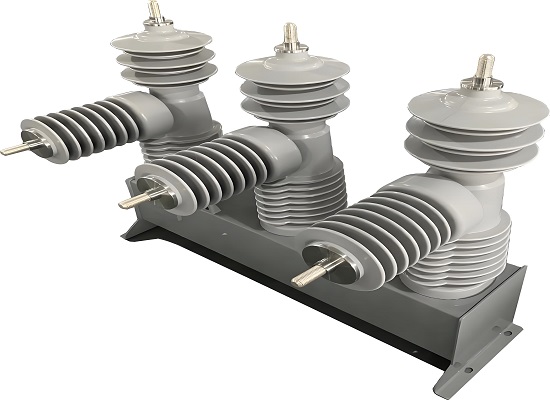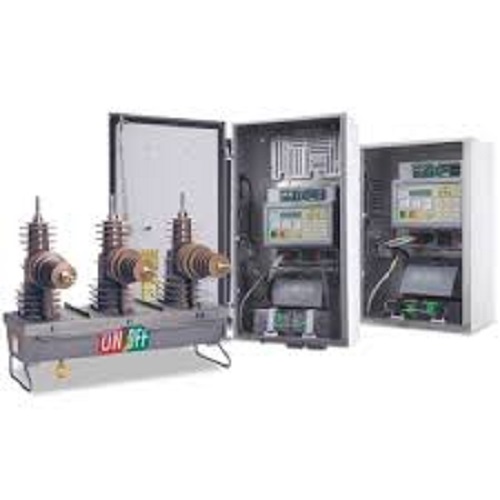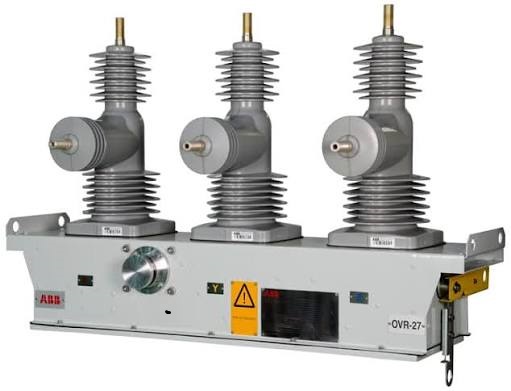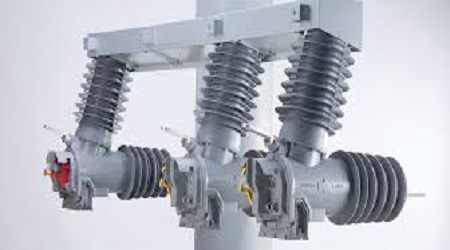
An outdoor recloser is a fault-interrupting device installed on MV overhead distribution feeders (and sometimes substations / pole-mounted) that can automatically open (trip) under fault conditions and then automatically reclose after a set delay(s). The idea is to allow momentary/transient faults (e.g., lightning, temporary contact) to clear themselves, restoring service without manual intervention, while for persistent faults, it locks out.
Key metrics include rated voltage, interrupting current, continuous current, number of reclose shots, environmental ruggedness, insulation type (vacuum, oil, solid, etc.), communication/control, monitoring, and maintenance demands.
Why have they become more intelligent?
Need for better reliability indices (SAIFI, SAIDI, MAIFI) for utilities.
Demand for remote monitoring, automation, and fault diagnostics.
Reduction in maintenance (oil-filled systems have high upkeep).
Integration with digital control, IoT, and SCADA.
Environmental concerns (less oil or SF₆, more solid insulation, vacuum interrupters, etc.).
 PMSet U-series W-series Schneider Electric recloser
PMSet U-series W-series Schneider Electric recloser
Companies & Best Products Compared:
The three companies covered here are ABB, Siemens, and Schneider Electric. Below, I describe leading MV outdoor recloser products from each, compare their features, pros & cons, and give guidance for engineers selecting among them:
| Company | Best / Leading MV Outdoor Recloser Products | Key Specifications & Features | Advantages | Potential Trade-offs / Considerations |
|---|---|---|---|---|
| ABB | OVR Outdoor Vacuum Recloser & GridShield Recloser / Eagle Single-Phase Recloser | – Voltage up to ~38 kV, continuous current up to ~1250 A, interrupting ratings (fault current) up to ~16 kA. – Solid-dielectric insulation (no oil/SF₆ for many models), vacuum interrupters. Embedded sensors; multiple controller options (ABB Relion RER615/RER620, SEL-651R, etc.). Single-phase (Eagle) up to ~27 kV, with self-powered features in some models. | – Long field-proven history (20+ years), multiple controller choices give flexibility. – Good environmental (pollution) robustness (creep distance, hydrophobic epoxy insulators). – Reduced maintenance vs older oil/gas designs. – Proven in both feeder automation and loop control/restoration applications. | – Upfront cost can be high for top specs. – For full intelligence/monitoring, a proper remote comms / SCADA infrastructure is needed. – For very high fault current demands or harshest climates, special care is needed in insulation/maintenance. |
| Siemens | Compact Modular Recloser (CMR) SDR Recloser with 7SR224 Controller (3-phase outdoor model) | – CMR: Voltage ratings from ~17.5-38 kV, continuous current up to ~630 A, short-time withstand current ~12.5 kA, lightning impulse ratings (BIL) up to ~170 kV. – CMR is self-powered (line voltage to ground potential supply), with rechargeable battery backup. Fully insulated housing, minimal exposed live parts. Wireless communications and data/event logging. 25-year pole-top life with low maintenance (battery as main periodic service). – SDR: three-phase with vacuum interrupters, cycloaliphatic epoxy molding; controller 7SR224 offers relay/automation control, human-machine interface, etc. | – Very low maintenance costs; safer designs (insulated), less oil, better environmental safety. – Advanced monitoring and control built-in; useful for smart grid / SCADA integration. – Lightweight, easier installation. | – Lower continuous current rating than some ABB models at the top end; may need multiple units for high current feeders. – Wireless/remote features depend on local telemetry/communications reliability. – Battery life & replacement logistics need planning. – Cost of controller/communication gear adds to system cost. |
| Schneider Electric | PMSet U-series / W-series / E-series Reclosers + PowerLogic ADVC Controller | – Solid-insulated pole-mounted 3-phase reclosers up to ~38 kV; models for 15-27 kV as well. – Example: E-series model 501150000 (27 kV, 630 A, ~12.5 kA short-circuit making; ~150 kV BIL) and 521250000 (38 kV, 800 A, ~16 kA, 170 kV BIL) – these are among the better-selling/advertised units. – Controllers/automation via PowerLogic ADVC, remote control, and monitoring, used in network automation. | – Broad product line; Schneider has a strong presence globally with support/servicing. – Good balance of performance (voltage, current) and features. – Strong in markets with environmental / insulation concerns (solid insulation, vacuum interruption) and automation. | – Some units may require more external equipment (controllers, enclosures, communications) to realize full “intelligent” capabilities. – For very high current or ultra-harsh duty, need to check whether the specs match ABB/SIEMENS at the top end. – Lifecycle operations (battery, sensors, firmware) need attention. |
 ABB OVR Outdoor Vacuum Recloser
ABB OVR Outdoor Vacuum Recloser
Technical & Business Criteria for Selecting an MV Outdoor Recloser:
When comparing or selecting among these products for real projects, engineers and managers should evaluate based on:
Electrical ratings
Maximum system voltage (kV) – Continuous current (A) – Short-time / interrupting current (kA) – BIL / impulse withstanding voltage <br> – Number of auto-reclose shots (how many reclosures allowed before lockout).
Insulation/interrupter technology
Vacuum vs oil vs gas vs solid dielectric. Vacuum + solid generally has lower maintenance and environmental risk. – Insulator material and performance under pollution, humidity, and temperature extremes.
Control/monitoring/intelligence
Local controller features (protection curves, reclosure settings, event logging). – Telemetry/communication: wireless, IEC protocols, SCADA compatibility. – Self-powering capabilities (battery-backup, line voltage harvesting).
Maintenance requirements
How often maintenance/inspection is needed (oil replacement, mechanical adjustments, battery replacement). – Access requirements (pole-top vs ground cabinet), whether controllers are withdrawable, etc.
Environmental and safety factors
Minimizing oil / SF₆ risk, environmental legislation compliance. – Safety for personnel and wildlife (insulated housings, no exposed live parts).
Total cost of ownership (TCO)
Initial procurement cost + installation + maintenance + downtime costs + replacement of consumables (e.g., batteries, sensors).
Support/supply/aftermarket
Local service presence, spare parts, firmware updates, and remote diagnostics. – Interoperability of control systems, integration with existing utility infrastructure.
Siemens CMR compact modular recloser
You can find a useful FAQ about the reclosers here.
Summarized Comparison & Recommendations:
ABB is strong when very high continuous currents + rugged long-term field performance are needed, especially in feeders with high loading or variable environmental conditions. Their OVR / GridShield families are mature, and they offer more flexibility in controller selection.
Siemens (with CMR) is very attractive for utilities/network operators who want lower maintenance, easier installation, and strong monitoring/intelligence built in. Especially useful for pole-mounted, remote feeders where maintenance is expensive. If the feeder currents/fault currents are within 630 A / ~12.5 kA or somewhat more, Siemens may have cost-effective options.
Schneider Electric offers a balanced portfolio that covers many voltage / current classes, with good controllers, good insulation technologies, and solid global support. Their E-series / PMSet, etc., are good choices where you need both reliability and good automation.
This content is written using my experiences and artificial intelligence.
Please contact me if you have any problems or issues.




